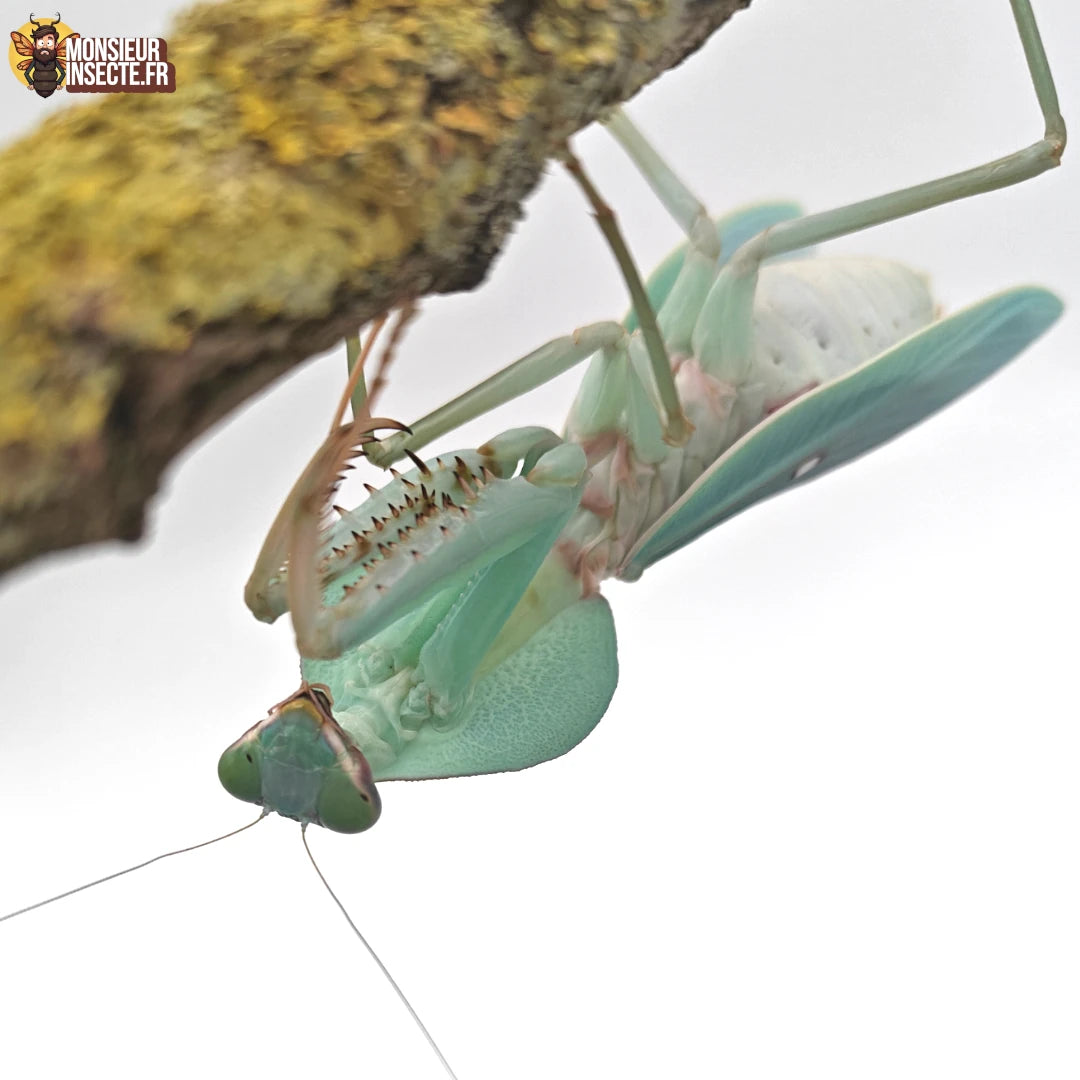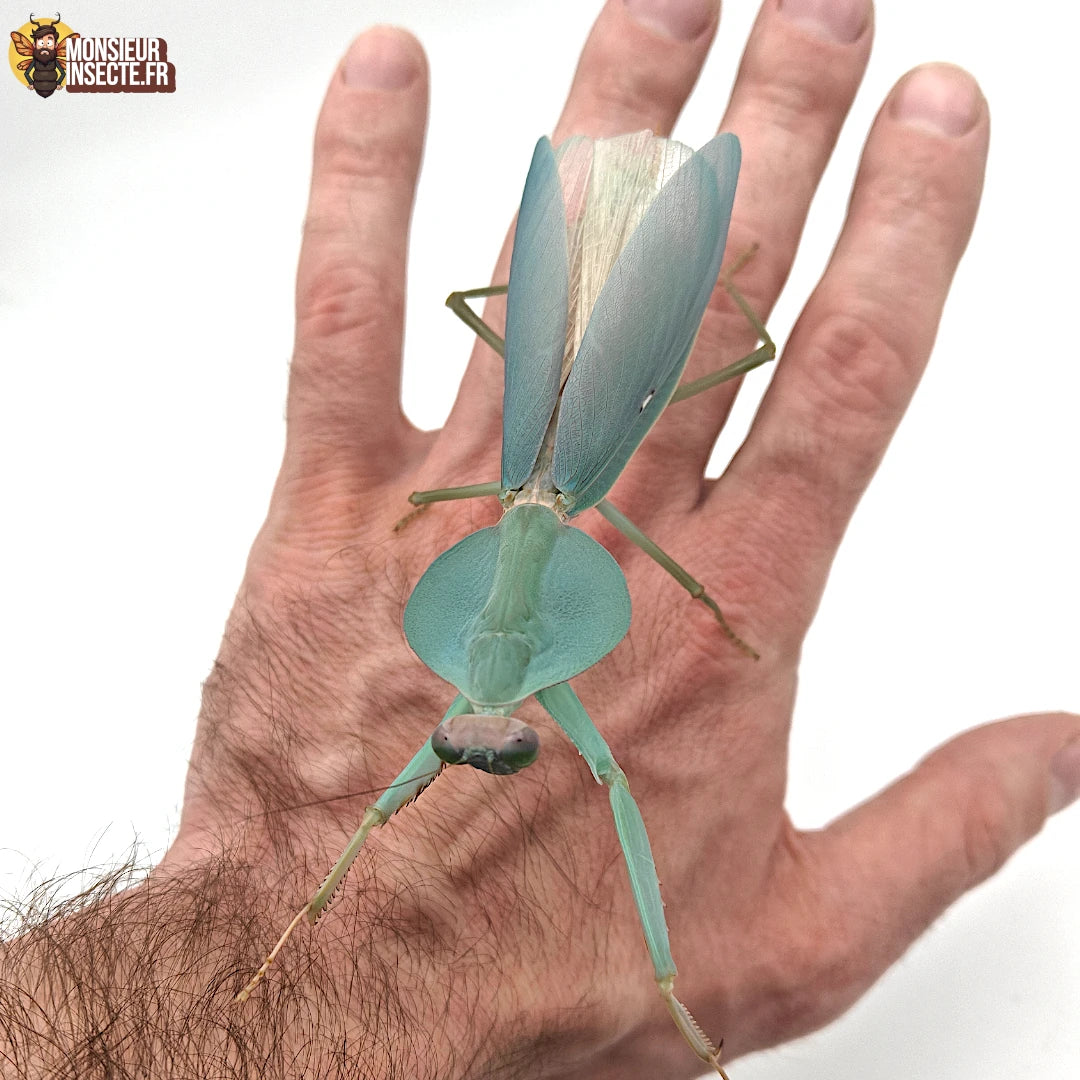



Praying Mantis | Shield Mantis "Rhombodera Latipronotum"
Praying Mantis Shield for Sale - Rhombodera Latipronotum

Discover the majestic Rhombodera latipronotum , a praying mantis impressive for its size and its magnificent enlarged pronotum which gives it the appearance of constantly carrying a shield on its back. Native to the tropical regions of Asia, this species is distinguished by its bright green color and its powerful forelegs adapted to capturing prey. A formidable predator, it feeds mainly on live insects such as crickets, locusts or cockroaches.
Easy to keep in captivity, the Rhombodera latipronotum is ideal for entomology enthusiasts who want to observe a fascinating insect with captivating hunting behavior. Its robust exoskeleton and large compound eyes give it extraordinary vision and speed.
Choose our Rhombodera Latipronotum praying mantis and raise a unique predator in your terrarium!
🚚 Secure and fast shipping.
Breeding sheet: Praying Mantis Rhombodera Latipronotum
Difficulty: Easy. A praying mantis without any particular difficulty. Feeds well on both flying and crawling creatures, reproduces well, and tolerates small errors.
Temperature: 21-28°C during the day with a slight drop at night. Ideally around 24°C but will be fine at room temperature.
Humidity: 60-80%. One or two sprays per day.
Food :
Rhombodera latipronotum is a voracious predator. It mainly consumes orthoptera (crickets, grasshoppers), diptera (flies) and other live insects adapted to its size. I recommend pinkies at a young age and then red runner as soon as possible . Young nymphs feed on fruit flies or small crickets, while adults can attack larger prey such as cockroaches or even small beetles.
Reproduction mode:
Sexual reproduction. After mating, the female lays an ootheca containing several dozen eggs. Incubation lasts approximately 1 to 3 months depending on the temperature and humidity in captivity. The hatched young larvae must be fed quickly to ensure their development.
Character :
The Rhombodera latipronotum is a solitary and territorial insect. Highly responsive to stimuli, it frequently adopts impressive defensive postures, spreading its forelegs and raising its thorax to intimidate potential predators. Despite this, it is completely harmless.
Lifetime :
- Nymphal stage: 4 to 6 months depending on temperature and diet.
- Adult: 3 to 5 months.
Size :
- Nymph: a few centimeters at the juvenile stage.
- Adult: 7 to 9 cm for males, up to 10-11 cm for females.
Breeder's Note:
This is where we come to the "serious" mantises in terms of size. This one will easily occupy the entire palm of an adult once it reaches adulthood. Another advantage is that sexual dimorphism is very low; generally, the male and female will be very similar in size.
The rhombodera can surprise with pretty purple hues inside the raviseuses, but not always. The surprise is yours 😁


